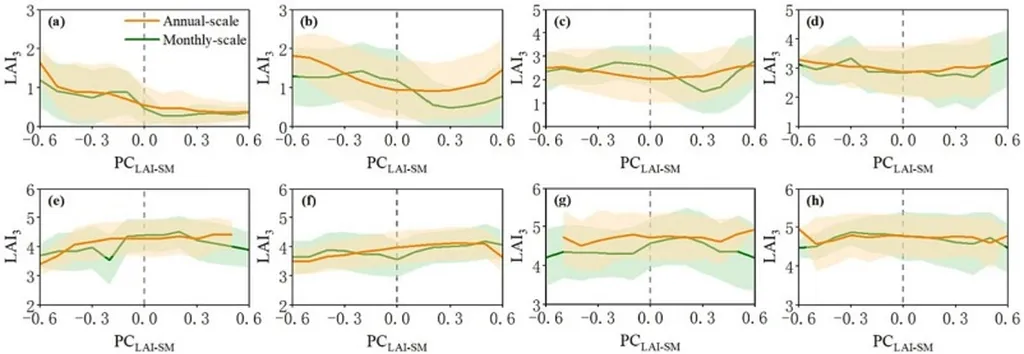In the heart of China’s Loess Plateau, a delicate dance between vegetation and soil moisture is playing out, with significant implications for ecological restoration and the energy sector. A recent study led by Dou Shentang from the Yellow River Institute of Hydraulic Research has shed new light on this intricate relationship, introducing a novel metric that could reshape how we approach sustainability in arid and semi-arid regions.
The Vegetation-Soil Moisture Suitability Index (VSMI), developed by Dou and his team, quantifies the balance between vegetation water consumption and precipitation replenishment. By analyzing multi-source remote sensing and meteorological data from the Beiluo River Basin between 1990 and 2019, the researchers uncovered troubling trends. “Over the past three decades, we’ve seen a significant downward trend in the overall VSMI,” Dou explains. “This suggests that soil moisture sustainability is declining, posing challenges for both ecological restoration and the energy sector.”
The findings, published in the journal *Ecological Indicators* (translated as *生态指标* in Chinese), reveal that the proportion of unsustainable areas—where vegetation water consumption outstrips precipitation replenishment—has more than doubled, from 11.74% to 26.57%. Forestland, in particular, is experiencing severe moisture deficits, with the unsustainable area ratio reaching 31.79%. This has profound implications for the energy sector, as many renewable energy projects, such as wind and solar farms, are often located in these regions and rely on sustainable ecosystems for their operations.
The study also highlights clear seasonal variations in VSMI, with summer values significantly lower than those in winter and spring. “Persistent high temperatures, increased evapotranspiration, and reduced precipitation during the growing season are primarily to blame,” Dou notes. This seasonal dynamic adds another layer of complexity to the challenge of maintaining soil moisture sustainability.
The research also found distinct responses among different vegetation types. Farmland VSMI increased significantly due to improved irrigation and agricultural practices, while shrubland maintained moderate sustainability but began to degrade after 2000. Grassland, meanwhile, significantly declined due to water competition from adjacent forestland. Soil texture and topography were also key constraints on spatial VSMI patterns, with southern hilly areas exhibiting poor suitability due to sandy soils and shallow soil layers.
The implications of this research for the energy sector are substantial. As the world increasingly turns to renewable energy sources, understanding and mitigating the impacts of ecological restoration on soil moisture sustainability will be crucial. “Our proposed VSMI index effectively identifies the water suitability and sustainability of different vegetation types,” Dou says. “It reveals the hydrological risks and spatial heterogeneity of ecological restoration efforts, providing a new quantitative tool and decision-making basis for optimizing vegetation patterns and enhancing ecosystem resilience in arid regions.”
The study’s findings could shape future developments in the field, guiding policymakers, energy companies, and conservationists in their efforts to balance ecological restoration with sustainable resource management. As the world grapples with the challenges of climate change, the insights provided by Dou and his team offer a valuable contribution to the ongoing conversation about how to create a more sustainable future.

